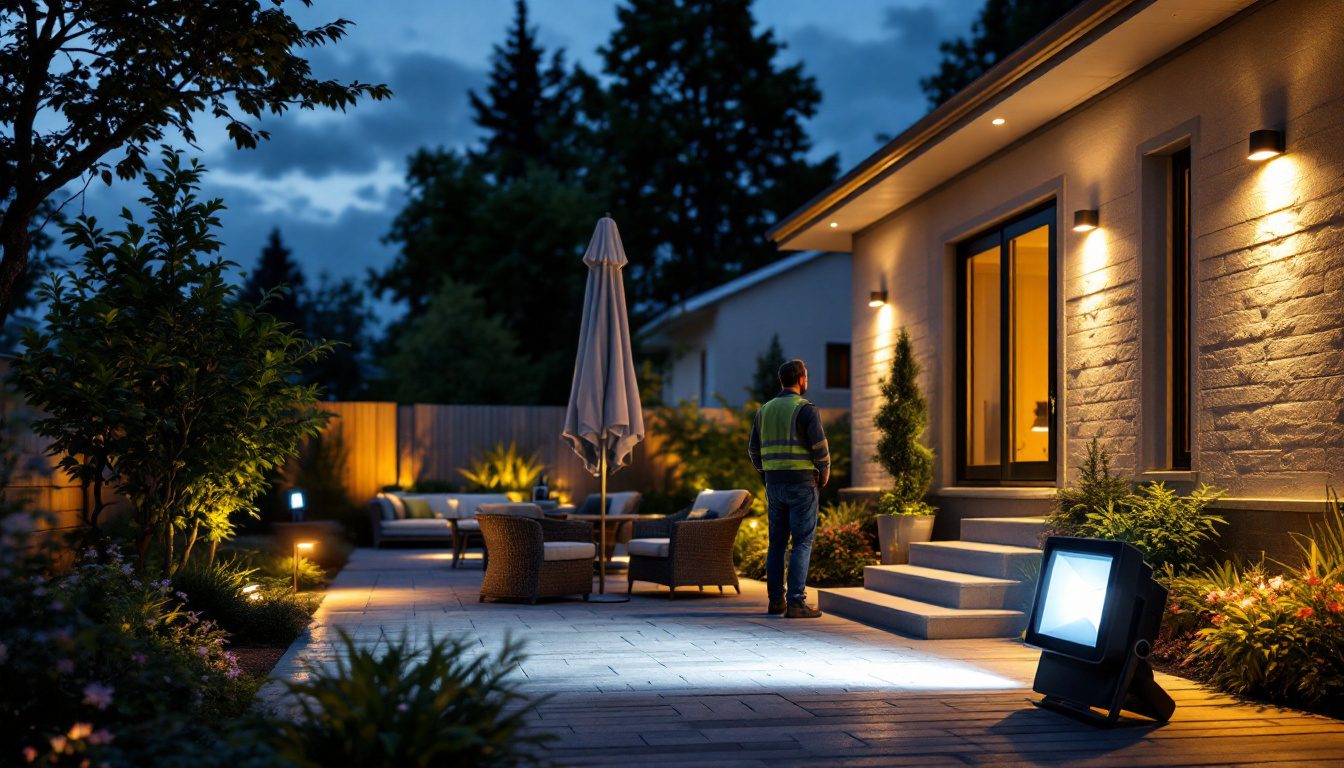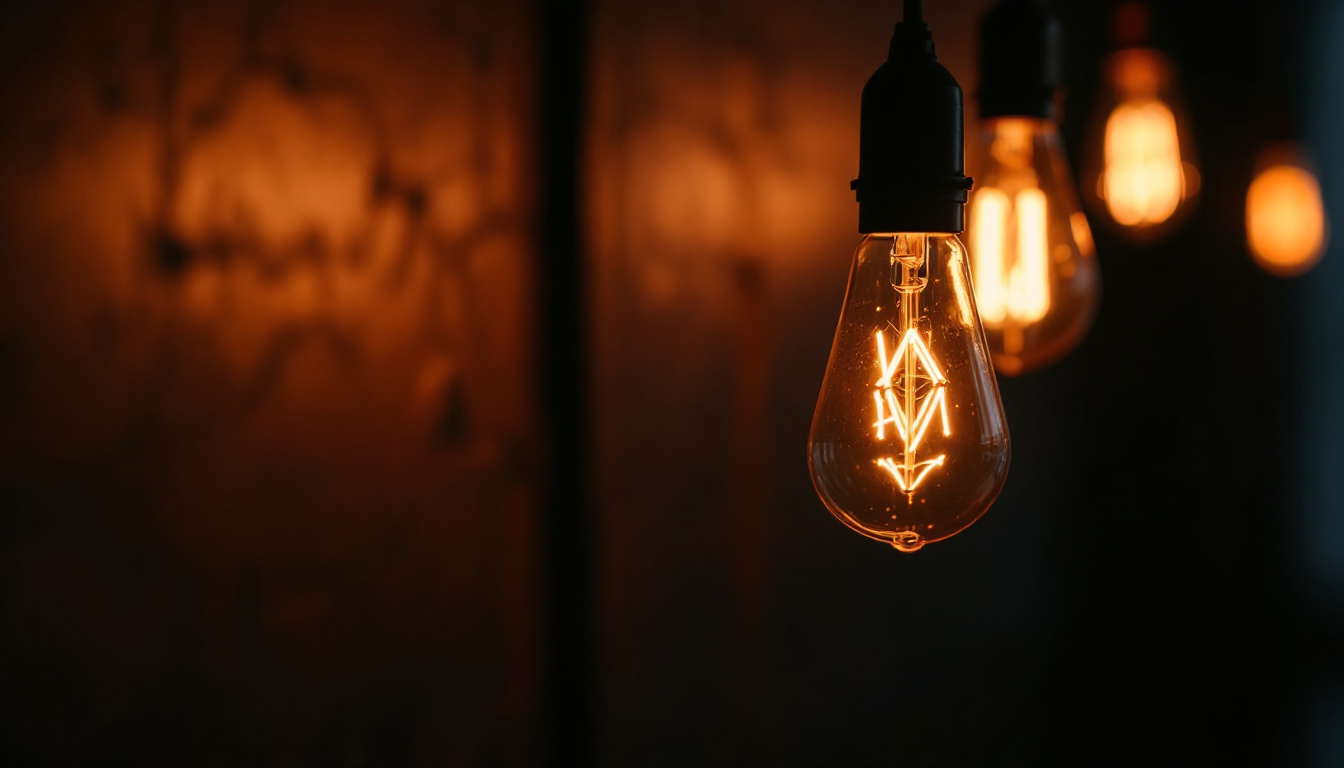
Flood lights are essential tools in the arsenal of lighting contractors. They provide the necessary illumination for various applications, from outdoor events to security lighting. However, not all flood lights are created equal. Understanding the nuances of flood lights can significantly enhance a contractor’s ability to deliver quality results to clients. This article will delve into the secrets of mastering flood lights, examining their types, features, installation techniques, and maintenance tips.
Flood lights are powerful lighting fixtures designed to illuminate large areas. They are often used in outdoor settings but can also serve various indoor applications. The versatility of flood lights makes them a popular choice among contractors, but understanding their specifications is crucial for effective use.
There are several types of flood lights available on the market, each with unique features and applications. The most common types include LED, halogen, and metal halide flood lights.
LED flood lights are known for their energy efficiency and long lifespan. They consume less power than traditional options, making them a cost-effective choice for contractors and clients alike. Halogen flood lights, while less energy-efficient, offer a warm light that many find appealing. Metal halide flood lights are often used for large outdoor spaces due to their high lumen output, but they come with a longer warm-up time.
In addition to these common types, solar-powered flood lights have gained popularity in recent years. These environmentally friendly options harness solar energy, making them an excellent choice for remote locations or areas where electrical access is limited. They are particularly useful for garden lighting, security applications, and pathways, providing illumination without the need for extensive wiring or electricity costs.
When selecting flood lights, several key features should be considered. These include brightness, beam angle, color temperature, and durability. Brightness is typically measured in lumens, and higher lumens indicate a brighter light. The beam angle determines how wide the light spreads, which is crucial for covering larger areas.
Color temperature, measured in Kelvin, affects the ambiance of the space. A lower Kelvin rating produces a warm light, while a higher rating yields a cooler, more daylight-like appearance. Durability is also vital, especially for outdoor applications. Look for flood lights with weather-resistant ratings to ensure longevity.
Another important feature to consider is the mounting options available for flood lights. Various mounting styles, such as adjustable brackets or pole mounts, can significantly impact how effectively the light is positioned. Some flood lights even come with motion sensors or timers, allowing for enhanced security and energy savings by ensuring lights are only activated when needed. This feature is particularly beneficial for outdoor security lighting, as it can deter potential intruders while conserving energy during off-peak hours.
Proper installation is critical for maximizing the effectiveness of flood lights. A well-installed flood light not only enhances visibility but also ensures safety and security in the area it illuminates.
The first step in installation is selecting the right location. Flood lights should be positioned to provide maximum coverage while minimizing glare. Consider the area’s layout and any potential obstacles that may block the light. For security purposes, flood lights are often placed at entry points, driveways, and dark corners of properties.
It’s also essential to consider the height at which the flood lights are mounted. Higher installations can cover larger areas but may require more powerful fixtures to achieve the desired brightness. Conversely, lower installations can create a more focused beam but may not cover as wide an area. Additionally, it’s wise to evaluate the surrounding environment; for instance, if trees or buildings are nearby, they could cast shadows that diminish the effectiveness of the flood lights. Taking the time to assess these factors can lead to a more strategic placement that maximizes both illumination and security.
Once the location is determined, the next step involves wiring and connecting the flood lights to the power supply. It is crucial to follow local electrical codes and regulations during this process. For outdoor installations, ensure that all wiring is rated for outdoor use to prevent damage from weather elements.
Using a dedicated circuit for flood lights can help manage the load and prevent tripping breakers. Additionally, consider installing a timer or motion sensor to enhance energy efficiency and security. These features allow flood lights to operate only when needed, reducing energy consumption. Furthermore, integrating smart technology can provide remote access to control the flood lights via a smartphone app, offering convenience and the ability to adjust settings based on real-time needs. This modern approach not only enhances security but also allows for customization of lighting schedules, ensuring that your property is well-lit during peak hours while conserving energy during quieter times.
Regular maintenance is essential for ensuring the longevity and effectiveness of flood lights. Neglecting maintenance can lead to reduced performance and premature failure of the fixtures.
One of the simplest yet most effective maintenance tasks is cleaning the flood lights. Dust, dirt, and debris can accumulate on the lenses, reducing light output. Regularly inspect the fixtures and clean them with a soft cloth or sponge and a mild detergent. Avoid abrasive materials that may scratch the lens.
In addition to cleaning, it’s important to inspect the wiring and connections periodically. Look for signs of wear or damage, such as frayed wires or loose connections. Addressing these issues promptly can prevent more significant problems down the line. Furthermore, consider scheduling inspections at least twice a year, ideally before the onset of extreme weather conditions, which can exacerbate any existing issues. Keeping a maintenance log can also help track the condition of your flood lights over time, ensuring that nothing is overlooked.
Over time, bulbs will burn out, and fixtures may become damaged. Keeping an inventory of replacement bulbs and parts can save time and ensure that repairs are completed quickly. When replacing bulbs, refer to the manufacturer’s specifications to ensure compatibility.
For fixtures that have sustained damage, assess whether a repair is feasible or if a replacement is necessary. Investing in high-quality fixtures can reduce the frequency of replacements and maintenance in the long run. Additionally, consider upgrading to energy-efficient LED flood lights, which not only last longer but also consume less power, resulting in lower energy bills. These modern solutions often come with built-in features such as weather resistance and enhanced durability, making them ideal for outdoor applications. Moreover, implementing a systematic approach to maintenance, such as creating a checklist for each fixture, can streamline the process and ensure that nothing is missed during routine checks.
For lighting contractors looking to elevate their skills, understanding advanced techniques can set them apart from the competition. These techniques can enhance the performance of flood lights and improve client satisfaction.
Smart technology is revolutionizing the way flood lights are used. Integrating smart controls allows contractors to offer clients enhanced functionality, such as remote access and scheduling. Smart flood lights can be controlled via smartphone apps, enabling users to adjust brightness and set timers from anywhere.
Additionally, smart flood lights can be integrated with home security systems, providing real-time alerts and monitoring. This added layer of security is appealing to many homeowners and can be a selling point for contractors.
Creating effective lighting layouts is an advanced skill that can significantly impact the functionality and aesthetics of a space. A well-designed layout considers the purpose of the lighting, the architectural features of the area, and the desired ambiance.
Using software tools to visualize lighting layouts can help contractors present their ideas to clients more effectively. These tools allow for simulations of different lighting scenarios, helping clients understand the potential impact of various flood light placements.
Educating clients about flood lights and their benefits is an essential part of a contractor’s role. Clear communication can help clients make informed decisions and appreciate the value of quality lighting solutions.
Clients may not be familiar with the different types of flood lights and their applications. Taking the time to explain the options available and their respective benefits can help clients choose the right fixtures for their needs. Discussing energy efficiency, brightness, and durability can guide clients toward making informed choices.
Additionally, highlighting the long-term cost savings associated with energy-efficient options can be a persuasive selling point. Clients are often more receptive to investing in quality products when they understand the potential for reduced energy bills over time.
Setting realistic expectations is crucial for maintaining client satisfaction. Discussing the limitations of flood lights, such as their effective range and brightness levels, can prevent misunderstandings later on. It’s essential to communicate that while flood lights can enhance visibility, they may not eliminate all shadows or dark spots.
By providing clear and honest information, contractors can build trust with clients, leading to repeat business and referrals in the future.
Mastering flood lights is an essential skill for lighting contractors. By understanding the different types of flood lights, installation techniques, and maintenance practices, contractors can deliver high-quality lighting solutions that meet their clients’ needs. Incorporating advanced techniques, educating clients, and maintaining open communication can further enhance a contractor’s reputation in the industry.
As the demand for effective outdoor and security lighting continues to grow, staying informed about the latest trends and technologies will ensure that contractors remain competitive. Embracing the secrets of good flood lights will ultimately lead to successful projects and satisfied clients.
Ready to take your lighting projects to the next level? At LumenWholesale, we provide lighting contractors like you with the highest quality flood lights and spec-grade lighting products at unbeatable wholesale prices. Say goodbye to local distributor markups and hello to a vast selection of industry-standard, reliable lighting solutions. With free shipping on bulk orders, you can stock up on premium lighting without worrying about hidden fees. Elevate your lighting game and ensure every project shines with Wholesale Lighting at the Best Value. Choose LumenWholesale for quality, affordability, and convenience in one seamless experience.

Discover essential tips and insights for lighting contractors to navigate the latest trends while avoiding common pitfalls.

Discover the crucial insights lighting contractors need to know about industrial large fans.

Discover the importance of flickering bulb lamps in modern lighting installations.

Explore the pros and cons of Bluetooth recessed lights compared to other lighting options.